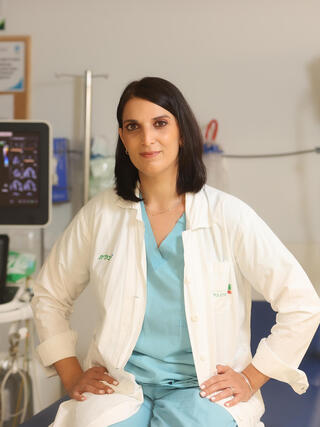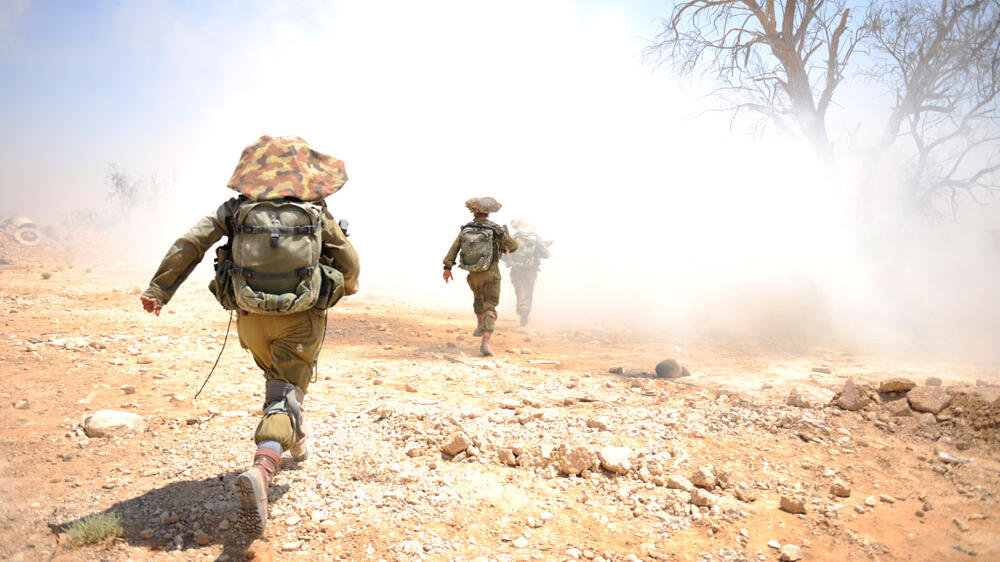After a 20-year-old soldier died this week during training on the hottest day of the year in Israel so far, a doctor in Tel Aviv cautions that it is important to understand more about the "life-threatening condition" requiring immediate treatment. Cpl.
Read more:
Dr. Shirit Kazum Beizer Director of the Sports Cardiology Clinic at Tel Aviv's Rabin Medical Center, explains that "heatstroke is a life-threatening condition, and without immediate and effective treatment, progression to fatal outcomes is unavoidable." Hillel Nehemiah Ofen was laid to rest at the Mount Herzl military cemetery in Jerusalem on Tuesday; his parents say they hope the military will learn lessons from the tragedy and correct the mistakes that were made in the future.
2 View gallery


Cpl. Hillel Nehemiah Ofen died of suspected heatstroke during a training exercise
(Photo: IDF Spokesperson's Unit)
"Heatstroke occurs when the body's temperature rises due to exposure to extremely hot environments or physical exertion. Body temperature reaches dangerous levels of over 40 °C, causing damage to body tissues and, in many cases, even death," Dr. Kazum Beizer also said.
She outlines two main types of heatstroke: "classic" heatstroke and exertional heatstroke.
Classic Heatstroke: Resulting from exposure to high temperatures, this type is common among vulnerable populations such as the elderly, infants and those with impaired heat regulation mechanisms. They may not have access to cooling measures or shelter. The physiological mechanism behind this type involves a decreased ability of the body to cool itself (reduced sweating - impaired sweating mechanism).
Exertional Heat Stroke: This type is triggered by intense physical activity, often in hot and humid conditions (high heat load), although not necessarily. In contrast to classic heatstroke, it's prevalent among young, healthy individuals engaged in sports, including athletes and soldiers. It can also affect those who use stimulant drugs (amphetamine and cocaine) or have consumed alcohol before physical exertion.
In these cases, the body's heat dissipation system is compromised, preventing it from effectively shedding the heat generated by muscle activity (metabolic heat). In other words, the body struggles to sweat and cool itself. Consequently, body temperature rises, leading to altered cognitive function and confusion. If not promptly and effectively treated, this can result in widespread systemic damage and, in many instances, even death. In both scenarios, heatstroke is indeed a life-threatening condition.
So, what distinguishes heatstroke from dehydration and heat exhaustion?
Dehydration occurs when the body lacks fluids due to inadequate fluid intake or substantial fluid loss (after vomiting/diarrhea). In such cases, the body temperature remains relatively unchanged. Common symptoms include thirst, fatigue, overall dryness, headaches, a sense of dehydration, and less urine output and sweating. Dehydration can pose danger and can potentially escalate to heat exhaustion or even heatstroke if untreated.
Heat exhaustion occurs as a result of exposure to heat or extreme physical exertion. During this condition, body temperature rises, but unlike heatstroke, it doesn't surpass 40 °C. Symptoms include weakness, nausea, headaches, cool and moist skin, a rapid pulse, and shallow, rapid breathing. Heat exhaustion doesn't severely impair bodily systems, but if left untreated promptly and appropriately it can potentially deteriorate into heatstroke.
 Dr. Shirit Kazum BeizerPhoto: Orel Cohen
Dr. Shirit Kazum BeizerPhoto: Orel CohenWhat are the signs of heatstroke during physical activity?
In the course of heatstroke during physical activity, the body's heat dissipation and regulation mechanisms are compromised, leading to excessive heat accumulation. In most cases, it manifests as a sudden collapse without prior warning. Around 20% of cases may exhibit preliminary symptoms such as dizziness, headaches, weakness and nausea. Other signs may include confusion, disorientation, abnormal behavior, altered cognitive states or even fainting. Any of these symptoms require an immediate cessation of the physical activity.
Who is at risk of developing heatstroke during physical activity?
Beyond climatic conditions, there are factors that affect the rate of heat production (metabolic heat) and its release from the body, increasing our susceptibility to heatstroke during physical exertion. These factors include:
Intensity and Duration of Exertion: The more intense the effort and the longer its duration, the greater the risk of heatstroke. Engaging in physical activity that isn't aligned with our physical capabilities puts us in danger.
Acclimatization to Environmental Conditions: For instance, if we trained for a marathon throughout the winter and the race day turns out significantly hot, our bodies aren't accustomed to high temperatures, thus elevating the risk of heatstroke. It's advisable to acclimate to the ambient temperature around 10-14 days before a competition.


